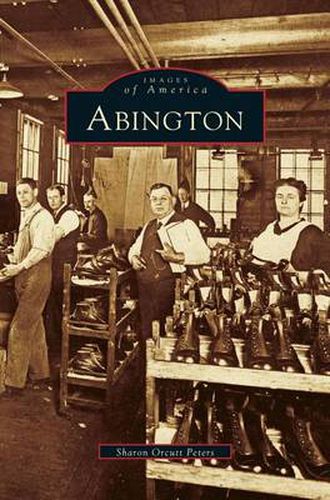Readings Newsletter
Become a Readings Member to make your shopping experience even easier.
Sign in or sign up for free!
You’re not far away from qualifying for FREE standard shipping within Australia
You’ve qualified for FREE standard shipping within Australia
The cart is loading…






This title is printed to order. This book may have been self-published. If so, we cannot guarantee the quality of the content. In the main most books will have gone through the editing process however some may not. We therefore suggest that you be aware of this before ordering this book. If in doubt check either the author or publisher’s details as we are unable to accept any returns unless they are faulty. Please contact us if you have any questions.
Throughout Abington’s history, its central location between Boston and Plymouth has been a vantage point that has been reflected in both work and play. It is Abington that provided the white-oak planks for the USS Constitution, and the town’s Island Grove Park had national significance during the abolitionist movement. Abington was founded and built around the mills and then grew with the times to become a focal point for the thriving shoe industry. Many wealthy industrialists and capitalists have left their mark with brick and mortar. Their mansions still line the streets, and their lives shaped Abington forever.Abington presents an illustrated portrait of what it was like to live and work in the town during the nineteenth and twentieth centuries. It presents vivid images of the townsfolk, the shoe factories, and the old roads through Abington. The book includes images of John L. Sullivan, heavyweight boxing champion, and of the Buffum automobile, built on Centre Avenue. With photographs from the Abington Historical Commission, the Dyer Memorial Library, the Historical Society of Old Abington, and personal collections, Abington is sure to evoke memories of a bygone era.
$9.00 standard shipping within Australia
FREE standard shipping within Australia for orders over $100.00
Express & International shipping calculated at checkout
This title is printed to order. This book may have been self-published. If so, we cannot guarantee the quality of the content. In the main most books will have gone through the editing process however some may not. We therefore suggest that you be aware of this before ordering this book. If in doubt check either the author or publisher’s details as we are unable to accept any returns unless they are faulty. Please contact us if you have any questions.
Throughout Abington’s history, its central location between Boston and Plymouth has been a vantage point that has been reflected in both work and play. It is Abington that provided the white-oak planks for the USS Constitution, and the town’s Island Grove Park had national significance during the abolitionist movement. Abington was founded and built around the mills and then grew with the times to become a focal point for the thriving shoe industry. Many wealthy industrialists and capitalists have left their mark with brick and mortar. Their mansions still line the streets, and their lives shaped Abington forever.Abington presents an illustrated portrait of what it was like to live and work in the town during the nineteenth and twentieth centuries. It presents vivid images of the townsfolk, the shoe factories, and the old roads through Abington. The book includes images of John L. Sullivan, heavyweight boxing champion, and of the Buffum automobile, built on Centre Avenue. With photographs from the Abington Historical Commission, the Dyer Memorial Library, the Historical Society of Old Abington, and personal collections, Abington is sure to evoke memories of a bygone era.